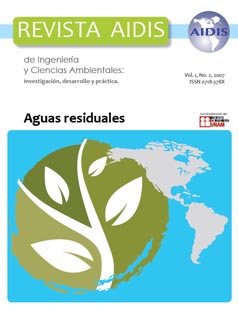Aclimatación de un inóculo sulfato reductor para la eliminación de sulfatos en un reactor discontinuo anaerobio
Main Article Content
Abstract
Many industrial effluents contain high concentrations of sulphates and organic matter. The anaerobic treatment of this type of wastewater generates hydrogen sulfide or hydrosulfuric acid, which at certain concentrations is toxic for methanogenic bacteria. An alternative treatment of this type of effluent is the metabolic way of sulfate reduction; however, one limiting factor is the availability of seeding material with enough metabolic activity to reduce high sulfate concentrations. This study obtained a sulfate‐reducing biomass from the anaerobic granular sludge of a batch reactor, which can be used as seeding material for the treatment of effluents contaminated with high sulfate concentrations. The reactor was operated with a synthetic effluent made up of lactate and sulfates at a COD/sulfate stoichiometric rate of 0.67 and a pH of 7.5. The test was carried out with sulfate concentrations of 2.5 g SO4 2‐/L and a strategy of adaptation of fixed efficiency. The findings show that it is possible to increase the metabolic activity of the sulfate‐reducing bacteria, which will result in a sulfate‐reducing seeding material with a sulfate elimination efficiency of 70% and a sulfate removal rate of 3.2 g SO4 2‐/L‐d in 25 days. This result indicates that it is possible to reduce the start‐up time of anaerobic reactors for treatment of effluents with high sulfate concentrations. It was also proved that the anaerobic granular sludge is a suitable source of sulfate‐reducing seeding material, due to its contents of sulfate‐reducing bacteria.
Article Details
How to Cite
[1]
Moreno, G., Moreno, J. and Buitrón, G. 2009. Aclimatación de un inóculo sulfato reductor para la eliminación de sulfatos en un reactor discontinuo anaerobio. Revista AIDIS de ingeniería y ciencias ambientales: Investigación, desarrollo y práctica. 1, 2 (Nov. 2009).
